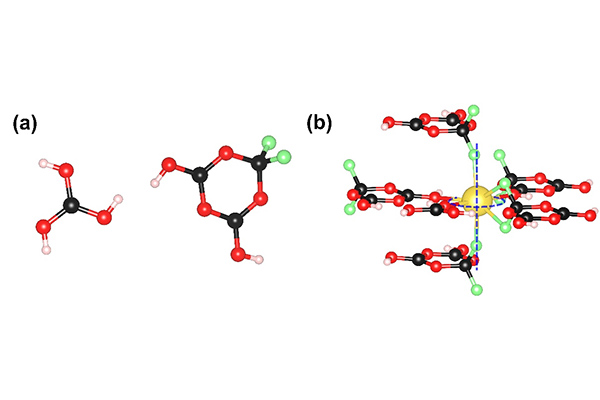Birefringent materials that can create polarized light for modern laser applications in the regions from deep-ultraviolet (deep-UV) to terahertz wavelengths are broadly exercised as optical devices, like polarizers, optical isolators, and prism polarizers, etc. To date, although several commercial birefringent crystals have been used practically, species that can be utilized in deep-UV region are still extremely limited. Among them, MgF2 and α-BaB2O4 crystals are birefringent crystals that hold the ability of producing deep-UV polarized light. Notwithstanding, the small birefringence or bandgap make both crystals not efficient enough, and therefore high-performing deep-UV birefringent crystals are still urgently needed. The type of functional anionic unit and its arrangement in the lattice is paramount to realize the enhanced optical anisotropy and an enormous amount of effort has been devoted to finding new birefringence-active anionic units and optimizing their arrangement to maximize their functionality.
Recently, a research group at Xinjiang Technical Institute of Physics & Chemistry, Chinese Academy of Science, has designed first sodium hydroxyfluorooxoborate Na[B3O3F2(OH)2][B(OH)3] by introducing multiple heteroanionic units. Two rare heteroanionic units, [B3O3F2(OH)2] and [B(OH)3], optimally align to induce large optical anisotropy and also the dangling bonds are eliminated with hydrogens, which results in an extremely large birefringence and bandgap. The well-ordered OH/F anions in [B3O3F2(OH)2] and [B(OH)3] were identified and confirmed by various approaches, and also the origin of large birefringence was theoretically discussed. These results confirm the feasibility of utilizing hydrogen involved heteroanionic units to design crystals with large birefringence, and also expand the alternative system of deep-UV birefringent crystals with new hydroxyfluorooxoborates. More importantly, the finding of more hydroxyfluoroborates will largely expand the frontiers of complex borate chemistry and borate-based optical materials.
The paper was published in Angew. Chem. Int. Ed. with the title of “Hydroxyfluorooxoborate Na[B3O3F2(OH)2][B(OH)3]: Optimizing the Optical Anisotropy with Heteroanionic Units for Deep Ultraviolet Birefringent Crystals”. This work was financially supported by National Natural Science Foundation of China, National Key Research Project, and Xinjiang Key Research and Development Program.
https://onlinelibrary.wiley.com/doi/10.1002/anie.202107291

Figure. The birefringence-active units in Na[B3O3F2(OH)2][B(OH)3]
 (86) 991-3838931
(86) 991-3838931 lhskj@ms.xjb.ac.cn
lhskj@ms.xjb.ac.cn (86)991-3838957
(86)991-3838957 40-1 Beijing Road
Urumqi, XinjiangChina
40-1 Beijing Road
Urumqi, XinjiangChina